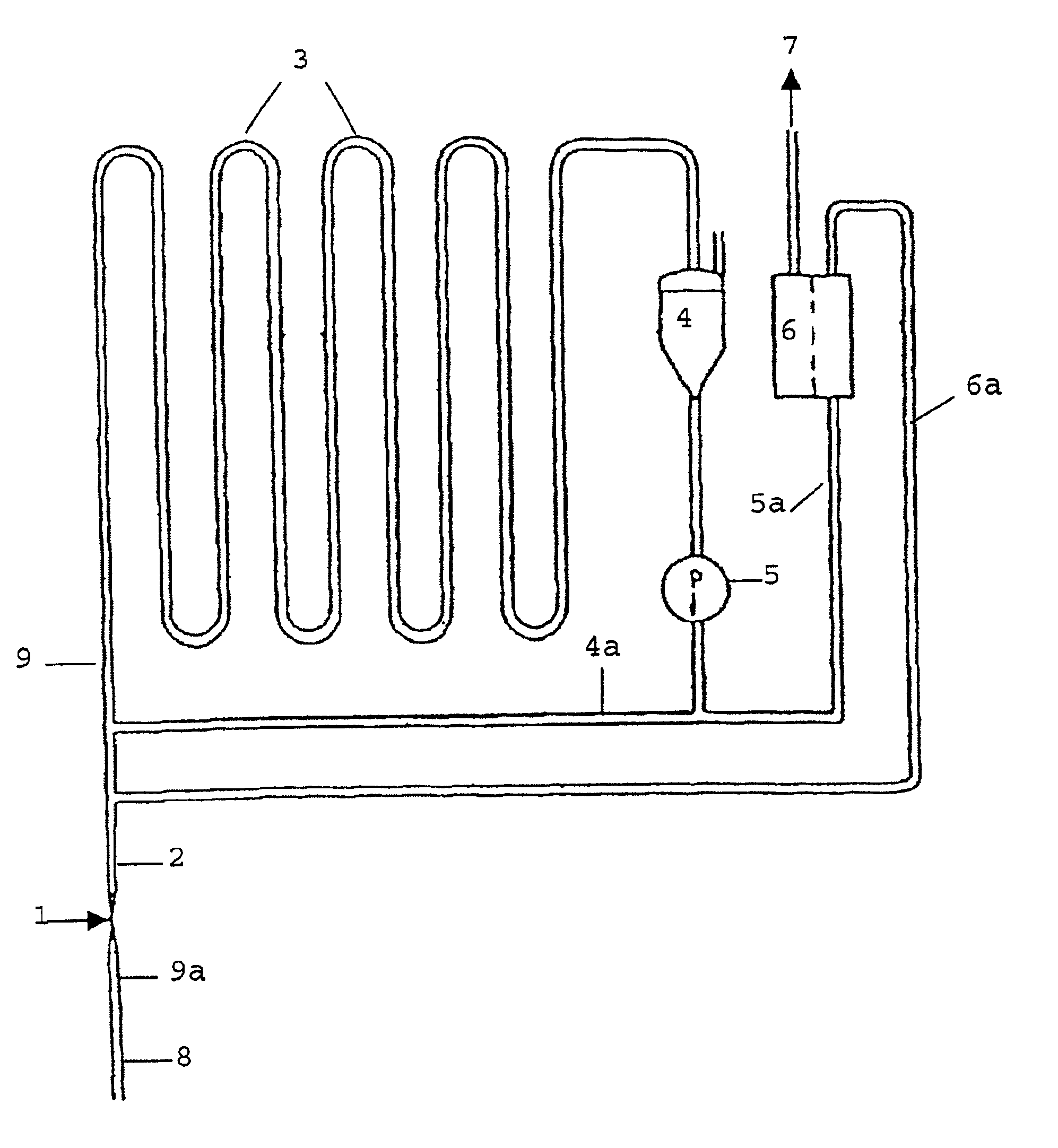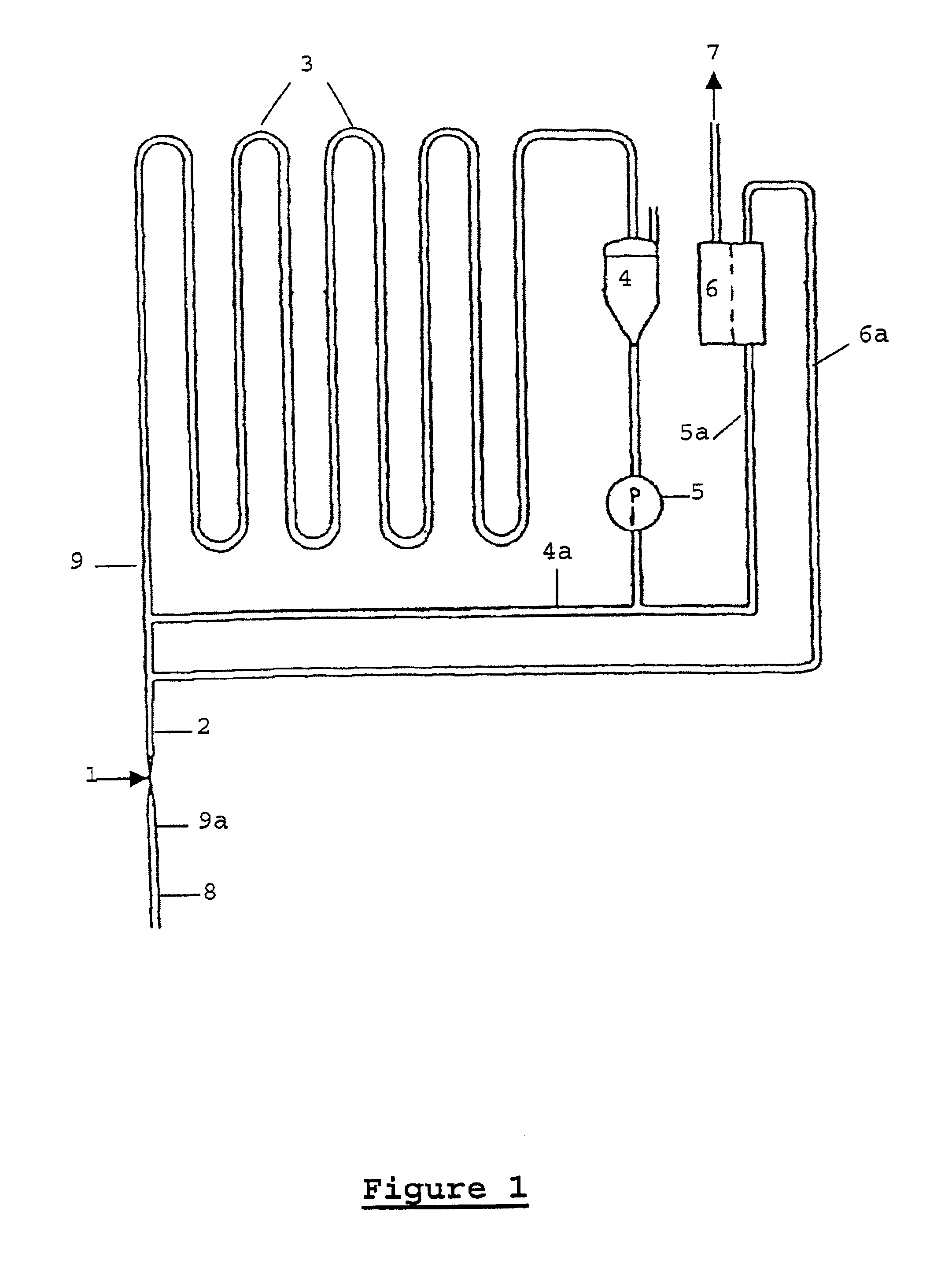Continuous hydrogenation process
a hydrogenation process and continuous technology, applied in chemical/physical/physical-chemical processes, hydrogen peroxide, organic chemistry, etc., can solve the problems of large pressure drop, unattractive route, and slow transfer of gaseous hydrogen into the solution and onto the catalyst surfa
- Summary
- Abstract
- Description
- Claims
- Application Information
AI Technical Summary
Benefits of technology
Problems solved by technology
Method used
Image
Examples
Embodiment Construction
The process according to the invention is particularly suitable in the above-mentioned process for the catalytic hydrogenation of
substituted anthraquinones or mixtures of substituted anthraquinones,
the partially ring-hydrogenated alpha- and beta-tetrahydro derivatives thereof and mixtures of a) and b)
to the corresponding anthrahydroquinones and tetrahydro-anthrahydroquinones.
In particular, 2-alkyl-substituted anthraquinones, the alkyl residue of which can contain 1 to 8 C atoms and can be linear or branched, are used. Examples of these are 2-ethyl, 2-amyl und 2-tert.-butyl anthraquinone and their tetrahydro derivatives.
Other compounds that can be advantageously hydrogenated by the process according to the invention are olefins, aromatic and heteroaromatic rings, carbonyl compounds and nitriles.
The substance to be hydrogenated can be introduced as such or in solution. Anthraquinones are preferably dissolved in a mixture of solvents containing a quinone solvent and a hydroquinone solv...
PUM
| Property | Measurement | Unit |
|---|---|---|
| diameter | aaaaa | aaaaa |
| diameter | aaaaa | aaaaa |
| specific interfacial surface tensions | aaaaa | aaaaa |
Abstract
Description
Claims
Application Information
 Login to View More
Login to View More - R&D
- Intellectual Property
- Life Sciences
- Materials
- Tech Scout
- Unparalleled Data Quality
- Higher Quality Content
- 60% Fewer Hallucinations
Browse by: Latest US Patents, China's latest patents, Technical Efficacy Thesaurus, Application Domain, Technology Topic, Popular Technical Reports.
© 2025 PatSnap. All rights reserved.Legal|Privacy policy|Modern Slavery Act Transparency Statement|Sitemap|About US| Contact US: help@patsnap.com


